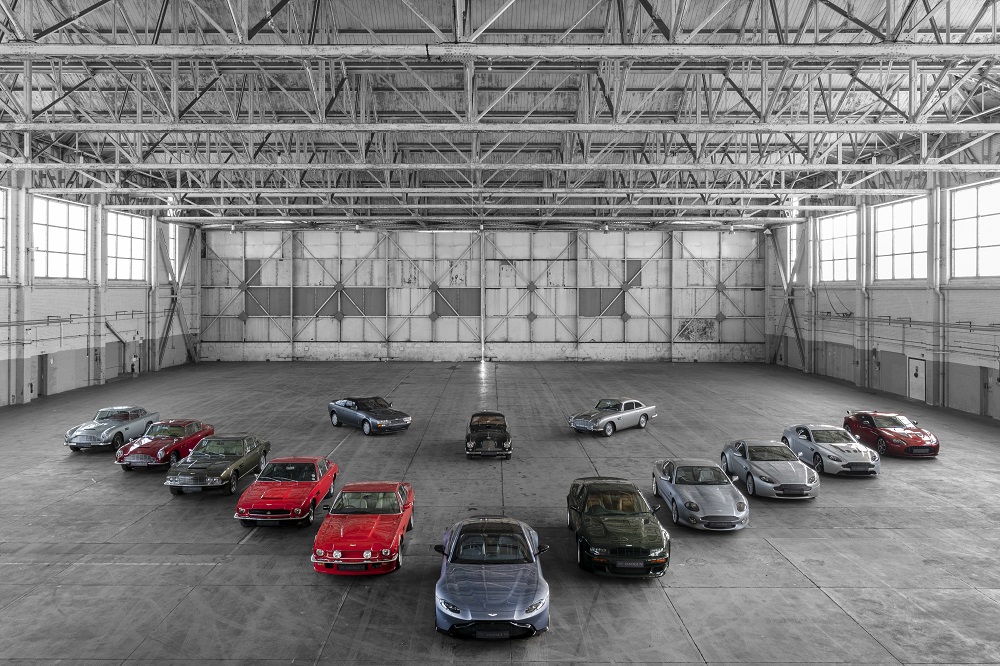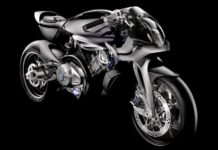Aston Martin celebrates this year the creation of one of its most famous model designations, as the Vantage family of sports cars marks its 70th anniversary. The name Vantage proudly sits on more than a third of all the sports cars ever made by the luxury British brand. Spanning seven decades and covering some of the company’s most revered sports cars, the Vantage family forms a crucial part of the ever-evolving Aston Martin story.
- 2020 marks the 70th anniversary of the Vantage name
- More than 36,000 cars sporting the Vantage moniker have been meticulously handcrafted over the last seven decades
- Vantage family of models includes some of Aston Martin’s most successful, celebrated and desirable sports cars
From the earliest days of the DB2 Vantage, through the iconic 60s cars: DB4, DB5 and DB6, into the muscular models that made Aston Martin a world-beater in the succeeding decades, then on through the brand’s game-changing ‘VH’ architecture cars and into today’s state-of-the-art Vantage sports car, this historic name has become synonymous with pace, power and more than a dash of style.
Remarking on the enduring appeal of Vantage as part of the brand’s rich and fascinating heritage, Aston Martin Lagonda President and Group CEO, Dr Andy Palmer said: “Today’s Vantage and Vantage AMR sports cars represent the latest interpretation of what this single, yet incredibly evocative, word means to drivers around the world.
“As we celebrate 70 years of Vantage in 2020, it allows us to delight in our superb sports car heritage. Vantage has always stood for engineering ambition, thrilling performance and exceptional beauty, and I’m pleased that today’s models more than live up to the standards set by their iconic forebears.”
70 years of Vantage – the key models
DB2 with Vantage specification
The word Vantage first appeared alongside the Aston Martin brand name in 1950, with the debut in that year of the Aston Martin DB2 with Vantage specification.
As with many of the early uses of the Vantage appellation, the title stood for a car with an uprated engine. In this instance, it referred to the use of larger SU HV6 carburettors and a higher 8.16:1 compression ratio in the car’s 2.6-litre Lagonda engine. These enhancements combined to achieve a heady 125bhp at 5,000rpm, thereby significantly outstripping the ‘standard’ DB2’s circa 105bhp. Just shy of 250 of these augmented DB2 Vantages, both saloons and drophead coupes, were manufactured at the brand’s then factory in Feltham, Middlesex, and it is believed that a good number of those remain drivable today.
Many Aston Martin engineers and designers had a hand in the early Vantage programme, but a technical paper on valve timing tests stored in the Aston Martin Heritage Trust archive shows that renowned racing car design theorist Robert Eberan von Eberhorst – famous for his early work with the Auto Union team before moving on to later design the Aston Martin DB3 and DB3S – was overseeing the project.
Communicating the Vantage advantage at the 1951 Earl’s Court Motor Exhibition, an Aston Martin press release said: “On the 1951 Earl’s Court stand will be displayed two Aston Martin DB.II saloons, one fitted with the regular engine and one fitted with the ‘Vantage’ engine, the high speed regularity of which was demonstrated so forcibly at Le Mans this year and last.”
The arrival of ‘Vantage’ as a signifier of more potent performance gently caught on among the sports car aficionados of the time, but it was not until early the next decade that another of the brand’s road-going offerings officially appeared in uprated Vantage form.
DB4 Vantage
The DB4 Vantage made its debut with the start of the DB4 Series IV cars in 1961 and, unlike its trailblazing predecessor it is distinguishable visibly, as well as technically, from its ‘standard’ siblings.
Key to this Vantage was the fitting of the ‘Special Series’ engine which features not two but three SU HD8 carburettors and revised cylinder heads with bigger valves and a higher compression ratio. The block remains the same as that of the standard car. Power was quoted at the time as 266bhp, a useful increase of about ten per cent over the 240bhp of the Tadek Marek-designed 3.7-litre aluminium straight six powering the non-Vantage enhanced DB4.
From a design point of view, the DB4 Vantage’s changes are subtle, but clear. It has the faired-in headlights from the DB4 GT with the addition of a bright aluminium trim.
The arrival of the more spacious DB4 Series V Vantage in 1962 – the final series of the DB4 model line – is significant not only as another Vantage version but also as one of the cars used in the filming of the James Bond film Goldfinger. Visually virtually indistinguishable from its DB5 successor – the car of course now synonymous with the world’s most famous secret agent – a DB4 Series V Vantage, effectively a prototype DB5, was used in some of the filming for Goldfinger, as the basis for the film’s ‘gadget’ car. Around 135 of these Vantages left the brand’s new Newport Pagnell factory in Buckinghamshire.
Those with a taste for extreme rarity, meanwhile, might be tempted by the DB4 Vantage with the optional DB4 GT engine: only half a dozen were created.
DB5 Vantage
It was no surprise, perhaps, that when the DB5 appeared in 1964 it would soon give rise to a Vantage version of its own. However, it might be more surprising to learn that only 68 cars of a total production run of 887 4.0-litre DB5 saloons were fitted with the optional Vantage engine, equipped with triple Weber carburettors and good for 325bhp – 40bhp more than available in the standard car.
The DB5 Convertible with the Vantage engine is a combination that is rarer still with only eight sports cars, out of the 123 built, featuring this engine. Genuine original examples of the DB5 Vantage and DB5 Vantage Convertible are, therefore, considered very desirable indeed, although many standard cars have over time also been modified to Vantage specification.
A press release announcing the car to the world’s media at the 1965 Geneva Motor Show succinctly but modestly encapsulated the Vantage-engined DB5’s appeal: “With this extra power, more rapid acceleration and higher average speeds are ensured.”
It might also be worth noting that the DB5 Vantage required an extra investment by its owner. Specifying the power upgrade meant an increase of £158, plus purchase tax, over the cost of the standard car thereby driving up the retail price, including purchase tax, to a heady £4,439 15 shillings and fivepence in 1965!
DB6 Vantage
The DB6 Vantage came next, in Mk I and Mk II versions, and followed the same tried and trusted upgrade formula as its potent predecessors. It utilised the same 4.0-litre straight six as it’s DB5 predecessor, with the same 325bhp output. The car is also again badged as a Vantage – a practice which began with the DB5 – with a discreet but important piece of nomenclature added to the side strakes.
Again, the number of original Vantage-engined cars can be counted in the dozens, rather than the hundreds, meaning that these iterations of the DB6 today remain hugely desirable and jealously guarded by lucky owners around the world.
Report by media.astonmartin.com











